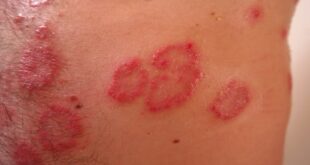Joint popping is a familiar occurrence. A faint or a loud pop follows the movement of your knee, ankle, or shoulder. Interlacing your fingers and then wringing them results in a series of cracks. Relief always follows joint popping. Often, this activity is not harmful at all. But you must understand why joints pop to determine whether it is good or bad for your health.

The Essentials of Joint Popping
It may seem alarming when joints pop. But it is part of the natural aging process. Joint popping becomes more frequent because the cartilage between joints gets worn down over time. This leaves a larger, rougher rubbing area. It is not a good thing for bones to rub against each other. This will be a painful experience.
The popping or creaking lets the person know that there is still a lot of cartilage to keep the bones safe. Joints also creak. Joint creaking comes and goes. Some people rush to their doctors to see if they have a condition since their joints pop and creak. They always go home with the knowledge that joint popping and creaking are normal.
Joint Popping While Exercising
Joint popping while working out is also a normal occurrence. This indicates the tightness of the muscles supporting and surrounding the joints. The muscle tightness can cause bone friction. This causes the noise. It is not something to worry about.
The person working out must remember to do some stretching first before performing more workouts. Tight muscles often cause various injuries. Muscle tears and strains must not happen at all. While stretching, the person might hear a loud pop. Then, relief follows. This means that the stretching loosened the tight muscles.
Knuckle Cracking Is Good
Cracking knuckles is a form of joint popping. Many people avoid doing this because of an old belief. The tale warns of getting joint inflammation and arthritis if a person cracks knuckles all the time. This is a false belief. Cracking knuckles does not cause problems at all. It is the natural process of cavitation.
The joints collect nitrogen bubbles. This is because the synovial fluid acts as a lubricant for these bubbles. The nitrogen bubbles collect in the spaces of one joint. This tightens the joint. A person can crack the knuckles to loosen the joints. The cracking releases the nitrogen gas trapped in the bubbles. Cavitation gives the joints relief.
Preventing Joint Popping

Stopping joint popping means moving every day. Constant movement and stretching prevent muscle tightness. They also maintain joint lubrication. As a result, the joints do not rub against each other.
It may not annoy the person doing it, but knuckle cracking can be disturbing to other people. It is a difficult habit to break. However, here are some useful tips that may help.
- Look for another way to remove stress from the body. Deep-breathing exercises and meditation can help relieve stress. These activities may even help the person forget about knuckle-cracking.
- Try to reflect on what starts the knuckle cracking. Addressing the reasons and issues like stress can help stop the cracking.
- Have something to hold to squeeze. Using a worry stone or a stress ball can take the mind off knuckle cracking.
- Being aware of the knuckle-cracking habit can help stop it.
- Wearing a rubber band on the wrist and snapping it can take the thought of knuckle cracking.
Calling the Doctor
Joint popping is never excessive. But if the popping starts to become painful, the individual must see a doctor. The painful popping of joints can be the beginning of early bursitis, arthritis, or tendinitis. Bursitis is the inflammation of the bursa, which aids in joint lubrication. Once there is an injury to the bursa, the joints will rub against each other. This will cause joint pain, popping, creaking, and cracking.
Arthritis is joint inflammation, which causes painful joint popping. This is when joints start rubbing against each other. This is not because the person keeps cracking knuckles. Arthritis is a condition, which worsens with knuckle cracking. Lastly, there is tendinitis. This is the inflammation of a tendon. As a result, the joint moves in irregular patterns, causing it to pop.
People who have OA (osteoarthritis) experience more joint popping. When OA occurs, the cartilage in a joint becomes thinner. It also becomes more ragged. This significant wear causes pain as the joints start to rub against each other. As OA worsens, joint popping becomes more frequent.
The popping of joints also occurs with rheumatoid arthritis. This may be the type of arthritis if the popping is high-pitched. Low-pitch popping sounds may indicate either non-inflammatory or inflammatory arthritis. This is often difficult to tell apart.
Joint Popping Is a Natural Process, But Awareness Is Crucial
Aging is a natural process of life. Wear and tear happen over time. Joint popping is an indicator of muscle tightening. Knuckle cracking is a way of releasing accumulated nitrogen from your joints. These activities are painless. But they are concerning when they happen with pain. Seeing your doctor for painful joint popping can lead to the early detection and treatment of serious issues.


